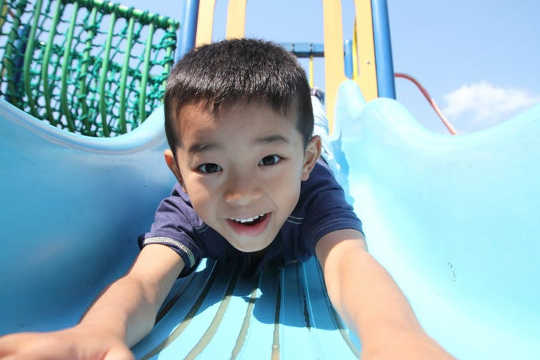
There’s lots going on in the lives of four-year-old boys, including how to regulate their emotions. Let’s not blame their hormones. from www.shutterstock.com
The idea that four-year-old boys have a spurt of testosterone is often used to explain challenging behaviour at this age.
But how did this idea come about? Is there any truth in it? And if not, what else could explain their behaviour?
Psychologist and author Stephen Biddulph is often credited with being the source of the idea that four-year-old boys have a testosterone spurt.
Although he mentioned it in his bestselling book Raising Boys, he was writing about someone else’s work:
According to Professor Mitchell Harman in the US Department of Aging, Such studies show boys and girls this age generally have different ways of playing and communicating. Boys’ play is generally more physical, engaging with mobile toys or building structures. Girls generally have more socially interactive play, and are more articulate.
Interestingly, girls with congenital adrenal hyperplasia, when they are exposed to high levels of testosterone in the womb, tend to have more “rough and tumble” play styles, consistent with a testosterone effect on early brain development.
So, how might being four or five change boys’ behaviour?
At this age, children learn how to interact with others, understand another’s needs, share, and to deal with new and unfamiliar situations.
So, children must learn to regulate their own emotions, like fear, concern, upset and anger.
When children don’t do this, we see the emotional outbursts, which can be explosive. Children can struggle to either understand or articulate why they lost control of their emotions. Boys may respond more physically and be less able to articulate what happened.
Learning how to regulate their emotions is an important skill for children to develop. Parents can model good emotional regulation, make sure children have regular daily routines, enough time to practice play and enough sleep. Praising positive behaviour and not overreacting to minor attention-seeking misbehaviour also helps.
We shouldn’t blame hormones for children’s behaviour. Instead, we need to better understand those behaviours.
For instance, persistent and distressing behaviours in a child may signal underlying anxieties, reaction to family stresses, which are felt but not understood, or be a result of adversities when they were younger. So, if you are concerned, seek professional advice.
For all children, we need to prioritise time to play. That could mean space, action and permission to be noisy and boisterous.
About the Author
Kate Steinbeck, Medical Foundation Chair in Adolescent Medicine, University of Sydney
This article was originally published on The Conversation. Read the original article.
Related Books
at InnerSelf Market and Amazon

























